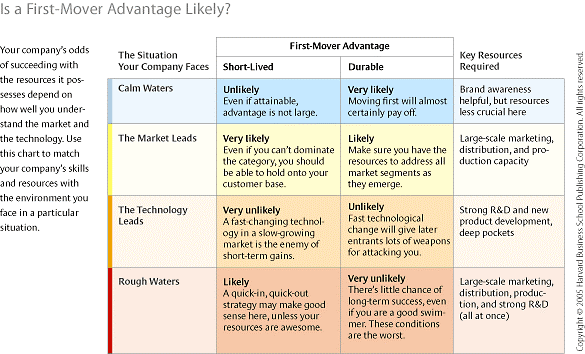Any startup founder knows the pressure of launching first. As a startup founder, one of the things that I often hear is the “first-mover advantage” rule. In the startup world, the idea of first-mover advantage is referred to as being the first to market a new product. The belief is that if you’re the first one to launch a new product into the market, you have a higher chance of success and untold riches await you. This is because being the first to market allows you to build a brand, and you’ll have a huge head start and enjoy market leadership for years to come.
This theory might sound convincing and there are even examples to support; when Sony released the Walkman in 1979, they dominated the portable music player industry for more than two decades — till the arrival of the iPod. But that’s isn’t always the case. On the contrary, it’s the other way around, with 47% of first-movers failing, compared with only 8% of fast followers.
This proves that the concept of “first-mover advantage” is only true to a certain extent. Similar to a long-distance race, a 30mins head start doesn’t necessarily mean that you will achieve first place — especially if your stamina and speed are lacking.
- Times have changed
Today, technology is evolving at a rapid speed with most of the products still way ahead of the market — autonomous vehicles, AR/VR, voice assistants, smart home devices, etc. Being first to market no longer guarantees future success if you’re unable to hold onto the lead.
There is no such thing as “first-mover advantage”. There is, however, “first-winner advantage”, and it is often imagined to be the former. — Alan Cooper
With that said, being the first to enter a market does have its short-term advantages. It’s just up to you to turn those advantages into long-term differentiators and define your core competitor advantage.
There are three types of benefits of being a first-mover that you can leverage;
- Innovation
When you invent a new product, technology, or service, you have the head start when it comes to expert knowledge, customer feedback, and user data. By exploiting this advantage, you are able to make it harder for latecomers to replicate your business. One such way of doing so is by using patents or other copyright laws to protect your technology and prevent competitors from directly replicating it.
- User Lock Down
If you’re able to lock down your users at the very start, you can make it inconvenient for them to switch to a competitor in the future due to buyer-switching costs. One way of doing this is by implementing long-term contracts during the user acquisition phase.
- Monopolize Resources
Being first to the market means that you have the ability to control strategic resources — for example, a location on a city’s main street, talented employees, or key suppliers. One such example is how Wal-Mart located their stores in smaller towns while hindering competitors from doing the same.
- Varied level of advantage
In the HBR paper, The Half-Truth of First-Mover Advantage, Fernando Suarez and Gianvito Lanzolla argue that the value of being the first-mover depends on two key factors;
- Pace of Innovation: How fast is technology evolving?
- Pace of Market Penetration: How fast do users adopt the use of the product or technology?
By combining these two factors, they were able to illustrate 4 different outcomes and scenarios which your business might fall into. You can use the below diagram to determine how effective being the “first-mover” is, based on the category your business falls into.
Calm Waters: Slow Innovation, Slow Market Penetration (Scotch Tape)
Market Leads: Slow Innovation, Fast Market Penetration (Irons)
Technology Leads: Fast Innovation, Slow Market Penetration (3D Printers)
Rough Waters: Fast Innovation, Fast Market Penetration (Smart Phones)

- Being second isn’t the end
Ultimately, of course, it’s not who’s first to market but who’s best in the market. There are many examples of second-movers beating the first, and ending up being the market leader. A good example would be Friendster which was a fore-runner in the social media space, only to be overtaken by Facebook due to lack of engagement by the online community.
So don’t be discouraged if you’re not ahead. On the contrary, make full use of the benefits of being a chaser. Those in front of you are venturing into the unknown, use their efforts as a case study and learn from their mistakes. Their initial success would prove that there’s a demand for the service or product — so that you wouldn’t have to take the risk of plunging into unknown waters. All these factors represent a huge strategic advantage that only the “chasers” have.
Conclusion: To sum it up
As technology improves at an alarming rate, new product categories are also springing up around us. In most instances, companies tend to debate on the need to enter those new markets early or later. There are pros and cons in either decision and it depends on the industry characteristic to determine if there’s any long or short term advantage by being a first-mover. But at the end of the day, it’s the strategy and execution that counts. After all, first-mover advantage occurs not when you enter a market, but when you start making real money in it.
You may also like,
10 Essential Steps in a Growth Strategy When Dealing with Innovation




